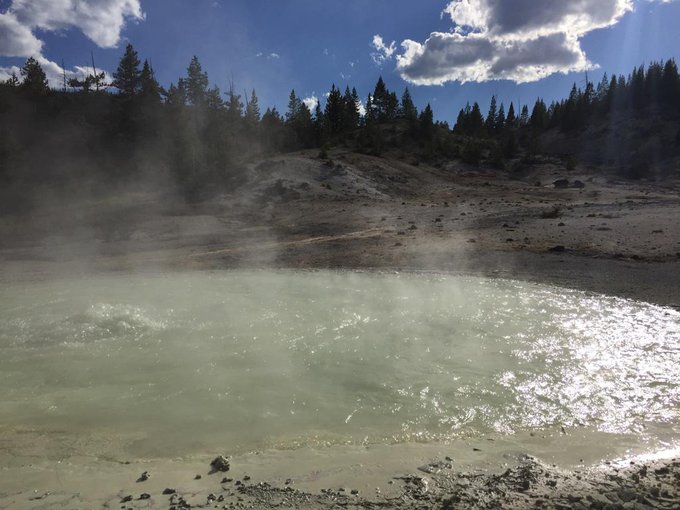
Aug. 8, 2019
Research Highlight
Sources of Hydrogen in Yellowstone Hot Springs

Evening Primrose spring in Yellowstone National Park.Image credit: Dan Colman.
Astrobiologists supported in part by the Exobiology Program and the NASA Astrobiology Institute (NAI) have developed a model to describe concentrations of hydrogen in the hot springs of Yellowstone National Park. Most life on Earth cannot survive in these boiling, bubbling hot springs, yet there are microorganisms that thrive in such harsh environments. Many of these microbes get their energy from hydrogen (H2), which is enriched in the hot springs of Yellowstone.
As part of the study, the researchers also collected samples from the springs and used metagenomics to better understand the population of microorganisms that live in these hydrogen-rich environments. The results suggest a link between geological sources of H2 and the distribution of organisms.
Studying life in Earth’s most inhospitable environments is important for astrobiologists because the mechanisms that these organisms use for survival can provide clues about how life might thrive in similar locations beyond our planet.
The study, “Probing the geological source and biological fate of hydrogen in Yellowstone hot springs,” was published in the journal Environmental Microbiology. The work was supported by NASA Astrobiology through the Exobiology Program and the the NASA Astrobiology Institute (NAI). Support also came from the NASA Postdoctoral Program (NPP). The NASA Astrobiology Program element of the NASA Postdoctoral Program (NPP) provides opportunities for Ph.D. scientists and engineers of unusual promise and ability to perform research on problems largely of their own choosing, yet compatible with the research interests of the NASA Astrobiology Program.